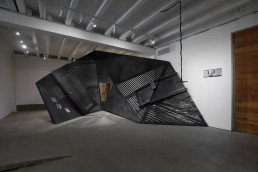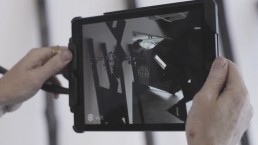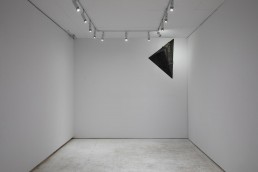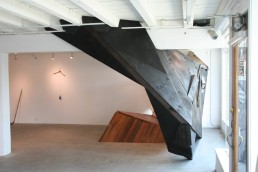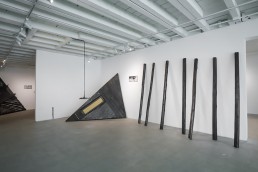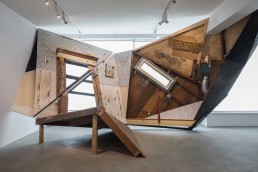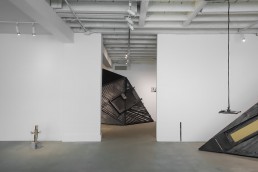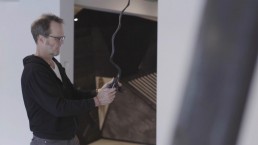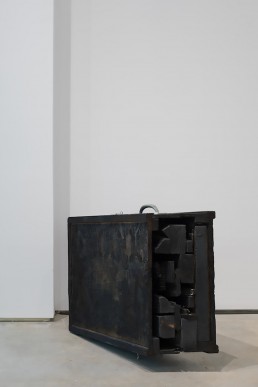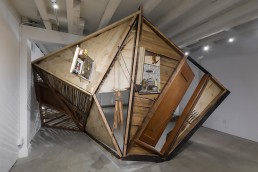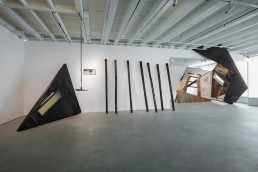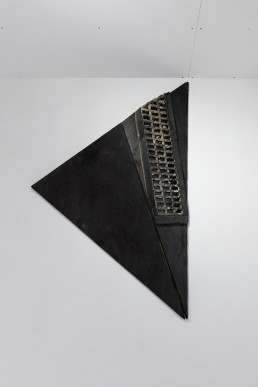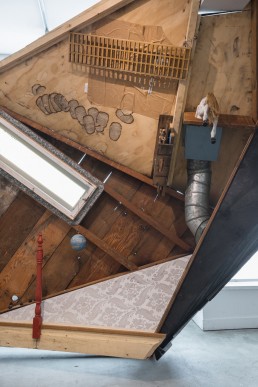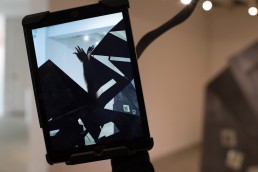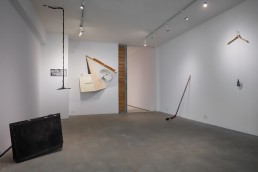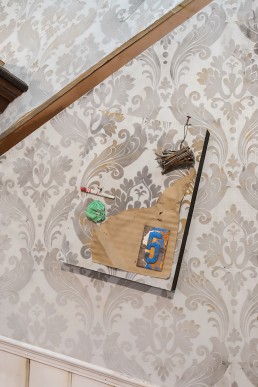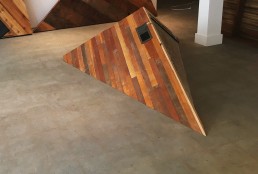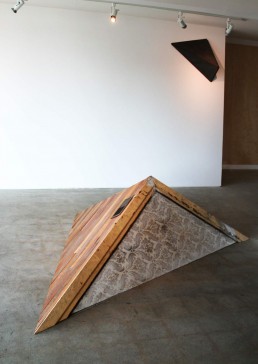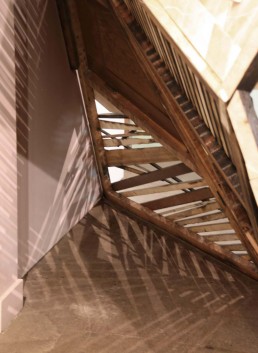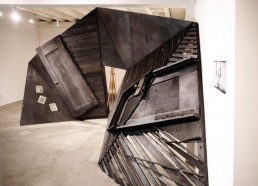“The (n)Atrocity Exhibition – a house crash for the rest of us”, interactive installation, 2017
physical assemblage with interactive AR (augmented reality) extensions, BAF Gallery, Vancouver, 2017
by Zoë Chan, BAF Gallery
Matthew Talbot-Kelly, works according to a logic of contradictions, fusing unlikely elements within his art practice—one that he describes as rooted in an absurdist, Dadaist, and collage-inspired sensibility. Often combining a hands-on engagement with everyday materials and a skilled employment of digital media (iOS apps, VR, AR, Arduinos etc.), he creates dense, multilayered installations, assemblage and new media works. This hybrid low-tech/high-tech approach vividly reflects his studies in architecture and personal interest in house-building, as well as his professional expertise working in animation and film.
Read More
For his new exhibition titled The (n)Atrocity Exhibition – a house crash for the rest of us at BAF, Talbot-Kelly deconstructs the house as an archetypal architectural object. By breaking down the domestic site into its basic building blocks—walls, doors, windows, and floorboards—Talbot-Kelly exposes the house as the hard “skin” between the inner space and the outer world. Foraging old planks of wood from construction sites, household fragments and the random flotsam and jetsam washed up on beaches, Talbot-Kelly reconfigures these pieces into a rough disoriented façade, with its surface charred to a black crust. He describes this installation as “a poised ‘house crash’—simultaneously constructing/destructing.” This volatile image of an explosion or collision poised in space generates a disquieting atmosphere of violence, disorientation, and vulnerability.
Cutting through the BAF’s space, Talbot-Kelly’s “unravelled” home shares parallels with the massive minimalist sculptures of Richard Serra that push viewers into a heightened awareness of their movement through space, the intricate puzzle-like blackened wall sculptures of Louise Nevelson, as well as the undulating fragmented facades of some of Frank Gehry’s architecture. Talbot-Kelly’s installation also conjures up the architectural dissections of Gordon Matta-Clark, particularly in its breaking down of the physical boundaries between inner and outer, private and public space.
Despite these shared parallels, Talbot-Kelly’s work here does not evoke the pared-down aesthetics of the aforementioned artists, but rather is profoundly storied. Indeed, his exhibition title darkly refers to JG Ballard’s The Atrocity Exhibition (1970), an experimental, non-linear book of dystopian fiction, that the author describes as a series of “condensed novels” which restage widely mediatized events of public trauma through the fragmented psyches of its various protagonists. Latent narratives are subtly suggested by the simple arrangements of things (or “moments” as the artist calls them) that punctuate the installation. Talbot-Kelly affixes to his wooden installation disparate found objects—ready-mades in the Duchampian tradition: a box of rusty nails, discarded crutches, a dusty reel of rope, a paint-scarred door, a broken suitcase handle, a piece of wood covered with faded wall paper, twisted and corroded metal. These re-purposed bits and pieces concretely embody the debris-filled traces of human existence, but also its cyclical nature.
Supplementing the rich narrative potential of this epic mise-en-scène is an interactive augmented reality (AR) component made available via suspended tablets, where other stories are digitally layered onto his deconstructed house. This AR layer extends the physical wall into an endless labyrinth beyond the interior surfaces of the gallery space: a digital palimpsest of past, present, and future where intermittent instances of play, absurdity, memory, nostalgia, and reflection arise.
